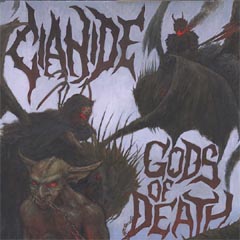Despite 20+ years of experience in the music industry, I remain a deliberate outsider. I cannot be bought; if I like your band, it’s because it’s good, and not that I want to get paid, care about you personally or expect you to like me. This is why I’m an outsider. I’m not part of the paycheck chain that seems to influence peoples’ judgment and make them whores. – “Home taping is killing music — mp3s are saving it” @ Anal-Examiner.com
It’s true though: being social gets you screwed.
People expect you to be a whore, so that if they treat you like a friend, you’re obligated to support their band.
The problem is that this cuts out quality control.
Instead, it’s a bunch of false friends sitting around supporting each others’ go-nowhere do-nothing make-work local bands.
Hobbyists versus people who have talent, in other words. The hobbyists have nothing better to do; their day jobs in service industries aren’t going to get any more exciting. Might as well be a big cheese on stage for a few minutes.
They have one dogma, and it’s that people should be rewarded for participation, not excellence.
This is why local scenes are cancerous morasses of ethical quicksand that suffocate any band or musician of quality. (A quality band will rise above the herd, and when people look at the herd so far below the other band, it makes the herd look bad. For that reason, the herd tries to squash any band of quality that rises.)
At first I just wanted to know how it drew the shapes so fast without flickering. Then I wondered how it made sounds. Before long I had disassembled and printed the entire game. I penned colored lines to signify the loops. Named the anonymous routines. Reconstructed many of the shapes on graph paper.
Astonishingly, I could read thought processes as easily as their results. I was seeing into the mind of the developer! The process was invigorating.
—
Euphoria is half wasted if not shared it with others, so gathering up my early printouts, I headed for campus. I gleefully flagged the first CS guys I knew from the hallway and bent their ears for twenty minutes. I explained the color coded arrows, memory location notations. Showed off my bitmap grids and shared my new insights into high speed blitting. Both nodded in appreciation as I spoke.
When I finished speaking I didn’t get the response I had expected. The first said something to the effect of, “Wow! But are you allowed to do that?” The second followed with, “I thought it was protected? I mean like company secrets.” The odd non sequitur was a bit deflating. They hadn’t empathized at all. They recognized my triumph as something akin to a salacious conquest. Gossip to be discussed in hushed tones. I could see curiosity in their eyes yet wariness on their face. As if they risked ostracism just for knowing. I’d peeked through a forbidden window to lear at someone’s naked code.
These were upper level CS honor students. Geeks in most regards. But unlike me they hadn’t grown up fighting to learn computers. They had gone to college because that’s what high school honor students do. Once finished with their core classes they had to choose some major and computers seemed like the future.
Only Loyd actually shared my feelings. I brought my printouts into his office almost as a last resort. He looked at my diagramming with a Cheshire grin commenting on each page before I could complete a sentence. He shared a couple of disassembly stories of his own. It wasn’t a long talk, five or ten minutes, but it was re-inflating. Loyd and I were totally different on the outside but inside we were somehow alike. – “Detente”
The problem with the music industry isn’t the industry. Money-grubbing suit-wearing bastards? Yep, they built the modern world, especially the good parts. They operate very consistently by making sure they provide what people want to buy.
The problem with the music industry is the flakiness of the people in it, specifically musicians, and specifically, all those local bands and supporting acts who drama- and karma-whore for attention so that you have to consider their trivial band alongside any that might be good.
This process drives away quality musicians.
The only solution is to be an outsider. Seek no friends, take no cash, expect everyone to hate you.
It seems harsh, but that way, you not only keep your soul, but get to keep your ability to tell garbage from gold intact.
No Comments The lads over at
The lads over at  We who still love metal walk a fine line between the sold out nu-hardcore stylings of metalcore, and the tendency to hop on the bandwagon of the old school too much; the previous Cianide, Hell’s Rebirth, walked too far on the old school side — when a band loses direction, they imitate successful techniques and patterns from the past without knowing what those patterns evoked in the listeners.
We who still love metal walk a fine line between the sold out nu-hardcore stylings of metalcore, and the tendency to hop on the bandwagon of the old school too much; the previous Cianide, Hell’s Rebirth, walked too far on the old school side — when a band loses direction, they imitate successful techniques and patterns from the past without knowing what those patterns evoked in the listeners.
